Categories
Subjects
Authors
Artists
Venues
Locations
Calendar
Filter
Done
February 2, 2024 – Review
Deimantas Narkevičius’s “The Fifer”
Michael Kurtz
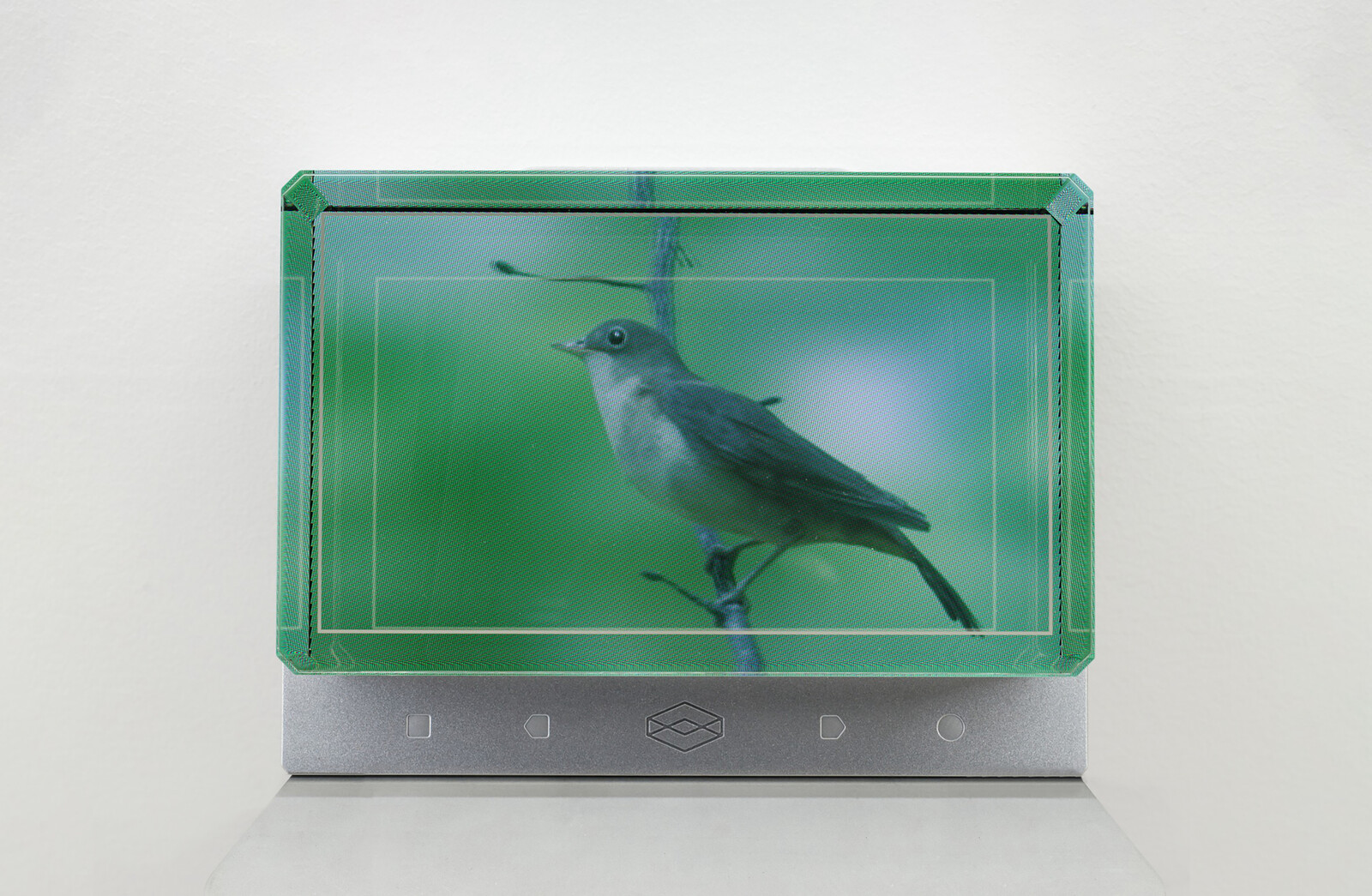
The centerpiece of Deimantas Narkevičius’s current exhibition at Maureen Paley is a holographic screen—a small block of glass on a sleek metal shelf. A nightingale appears in the glass and lands on a branch that hangs there, while audio plays of a flute mimicking birdsong in sync with the movements of its beak. It flies out of view again and then returns, left and right, left and right. On an adjacent wall is another branch of sorts—a bark-like bronze cast of the cavities inside a flute—and nearby hang two small black-and-white images: a 1920s photograph from the Lithuanian State Archive of a soldier playing the flute by a window and a digital recreation of the same scene from directly outside the building. This perplexing constellation of objects is named after the shadowy figure in the photograph, The Fifer (2019).
Holography represents the height of illusionism, elaborately conjuring animated three-dimensional images. But the nightingale’s restless movement in and out of frame continually calls attention to the screen’s edges, where the projection falters and the empty glass block becomes visible. The illusion is further ruptured by the flutist’s birdsong which, isolated from any ambient sound, is unconvincing. Each item here performs a …
November 4, 2022 – Review
Olivia Plender’s “Our Bodies are Not the Problem”
Tom Jeffreys
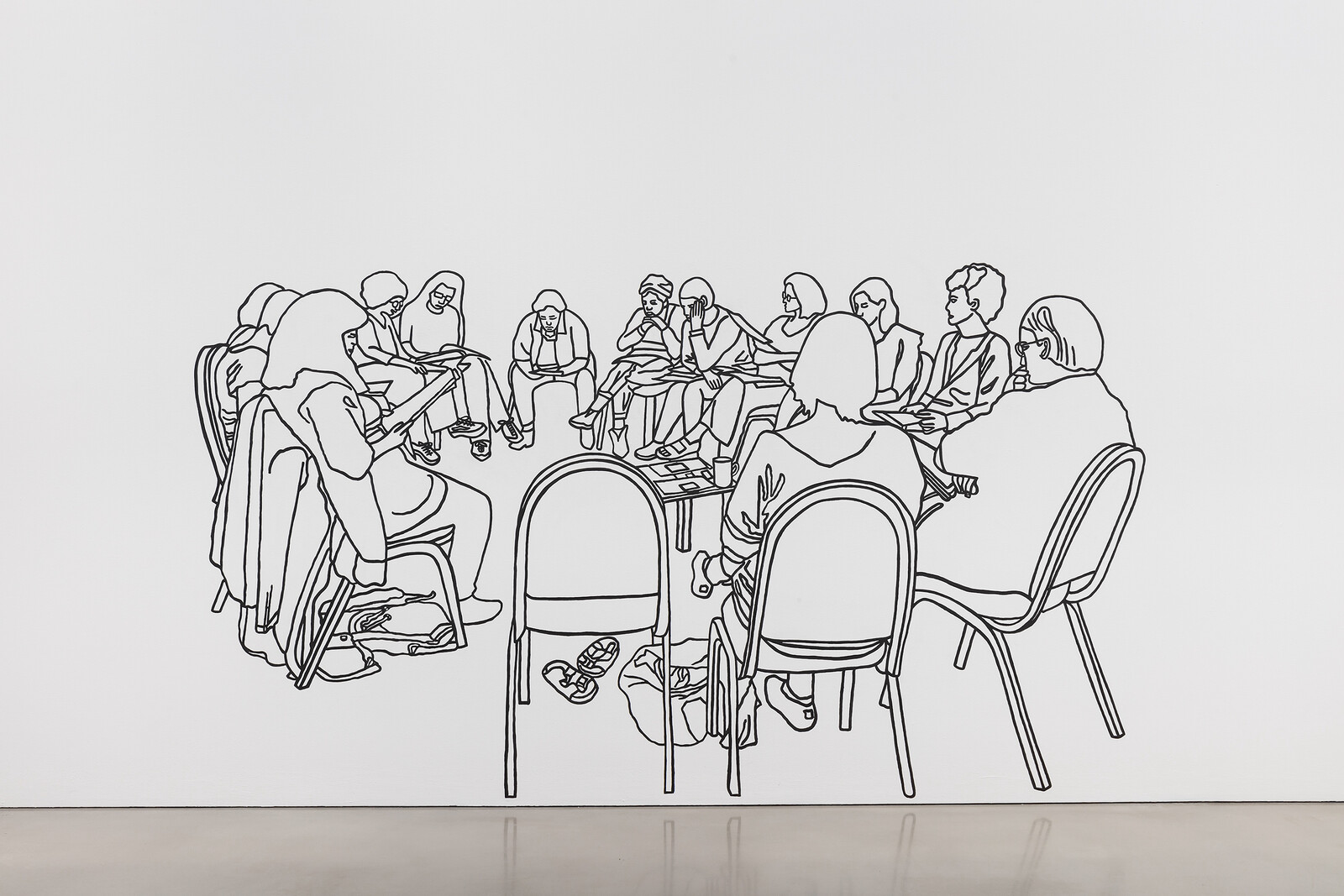
Olivia Plender’s research-driven practice is rooted in a fascination with the way communities self-organize—from activist groups, youth movements, and spiritualist associations to alternative education programmes and the offices of tech behemoths—and the strategies, labor, geographies, and architectures that enable (or obstruct) them. Her second solo exhibition at Maureen Paley recontextualizes texts, images, and actions relating to self-education and resistance, with the delicacy of several series of small drawings in black ink or charcoal pencil contrasting with all-caps wall posters proclaiming statements like “THEY WILL NOT DIVIDE US.” But in bringing together these slices from various projects, each of which has grown out of sustained historical research or community engagement, this exhibition is not always successful in communicating their richness or significance.
Plender takes great care in considering the spaces in which community organization takes place: she pays attention, for example, to the labor that goes into setting up for a meeting or tidying away afterwards. In 2021, she revamped the community room at Glasgow Women’s Library, transforming the upstairs area into one of welcoming softness. Plender’s life-size drawings are now emblazoned across a partitioning curtain. Floor rugs and jewel-toned bean-bags offer comfort for those wishing to sit or lie, while …
May 20, 2022 – Feature
London Roundup
Orit Gat

In the local elections held the week before London Gallery Weekend, the residents of Westminster City Council, which covers much of central London, voted Labour into a majority for the first time since the council’s creation in 1964. The vote was partly informed by the Conservative council’s misguided decision, widely publicized in 2021, to spend six million pounds on the “Marble Arch Mound,” a twenty-five-meter-tall astroturf hill and viewing point designed to lure viewers back to the city’s busiest shopping district. It failed: many stores are still covered with for-rent signs, one of which peddled a “blank canvas for new ideas.” These are the visual and linguistic relics of the before-time: they represent old ideas of urban environments and their inhabitants’ habits, and beg the question, “What if we don’t want to return to how things were?”
At Emalin, Augustas Serapinas is displaying eight large black reliefs made of roof shingles taken from a wooden house from his home country, Lithuania. Many of these traditional architectures are now abandoned or destroyed and used for firewood. Serapinas bought one, broke it apart, charred its roof shingles, and repurposed them into monochromes that are part-painting, part-sculpture. They are heavy, loaded with their …
May 21, 2021 – Review
Peter Hujar’s “Backstage”
John Douglas Millar

“Backstage” is the third solo exhibition of Peter Hujar’s work to be presented at Maureen Paley’s London space since 2008, when the gallery took responsibility for the artist’s estate in the UK. The work is presented across two rooms; a larger space that almost exclusively shows portraits of artists from New York’s thriving drag performance scene of the 1970s, either preparing their costumes and make-up or gloriously composed backstage. These silver-gelatin prints were made by Hujar himself, with three exceptions: a portrait of the filmmaker John Waters, another of his muse Divine, and a group self-portrait showing Hujar jumping in the air with friends. These are all estate ink prints made by Gary Schneider, the artist and master printer trained by Hujar and now widely regarded as one of the finest printmakers alive. He is also the only printer authorized to make editions of Hujar’s work.
The second, smaller room displays four further estate prints: an extraordinary nude self-portrait entitled Seated Self-Portrait Depressed (1980); a portrait of Hujar’s friend the writer and raconteur Fran Lebowitz reclining in bed at her parents’ home in Morristown; one of Hujar’s sometime lover, protégé, and friend, the artist David Wojnarowicz, sparking up a cigarette on …
March 10, 2016 – Feature
Daria Martin’s “At The Threshold”
Morgan Quaintance
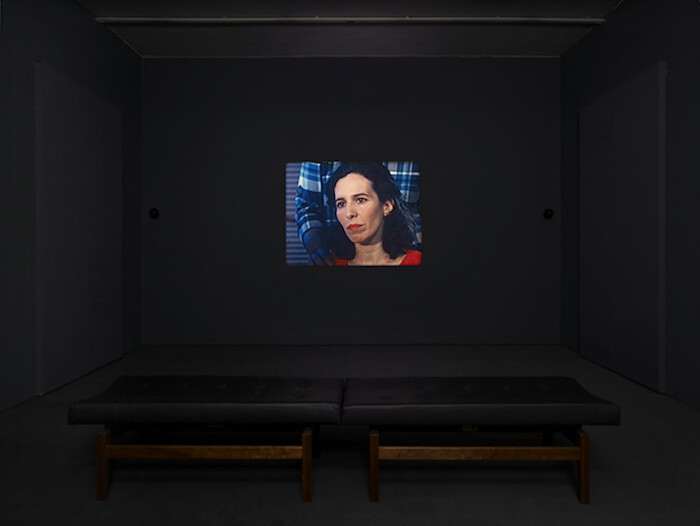
“I experience pain and sensation in response to seeing or thinking about another individual getting hit or touched on part of their body.” This description of mirror-touch synesthesia—the ability to feel the same or sympathetic physiological sensations and emotional states in sync with another human being, animal, or sometimes an object—is given by Sophie. Her written account is part of a correspondence between London-based filmmaker Daria Martin and other mirror-touch synesthetes. All provide insights into experiences of highly empathic intersubjectivity, and informed Martin’s development of three short films. At The Threshold (2014-2015), a narrative of domestic co-dependency threatened by an outside force, is the second and most recent installment in the trilogy. Projected in a small, dark room, it is a hypnotic vision of uncanny sensuality, shot in saturated 16mm film, in which the lines between self, other, and object dissolve into a holistic sensory continuum.
The setup is simple. A mother and son are housebound synesthetes. Theirs is an interior world of wonder, a microcosm of things and materials that open a universe of rich associative and intensely poetic sensory experience. A red jumper, a cracked eggshell, a ball of wool: each cause a rush of psychophysiological associations for the …
October 19, 2015 – Feature
London Roundup
Orit Gat
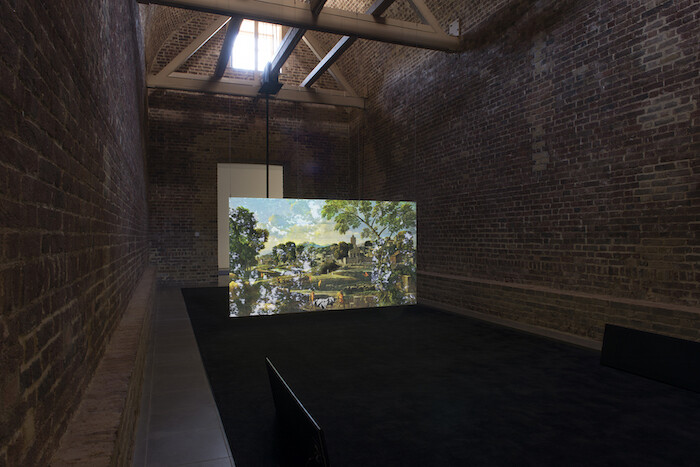
In an art fair week, when it seems like everyone around is constantly discussing where they were, what they saw, and how it was, discourse is dependent on physical participation, on the encounter with art in a space, strengthening the primacy of the exhibition as a mode of experiencing artwork. While there is still a lot of thinking to be made about how display has historically shaped production and continues to do so, Frieze week in London is a great moment to assess whether there is something about the exhibition that makes it such a lasting form.
So why do we still go see exhibitions? Chisenhale Gallery is showing Jumana Manna’s A magical substance flows into me (2015), a 70-minute film screened five times a day. It is an exploration of traditional local music in Palestine/Israel, based on Manna’s research into the work of the German-Jewish ethnomusicologist Robert Lachmann (1892-1939) in Mandatory Palestine. Manna plays radio recordings made by Lachmann on an iPhone to the participants in her film, ranging from a young Jewish musician singing the Arabic songs her Moroccan grandmother taught her to a Palestinian flute maker who explains that traditional Palestinian music is more fashionable in the West …
January 22, 2015 – Review
Morgan Fisher’s "Past Present, Present Past"
María Palacios Cruz
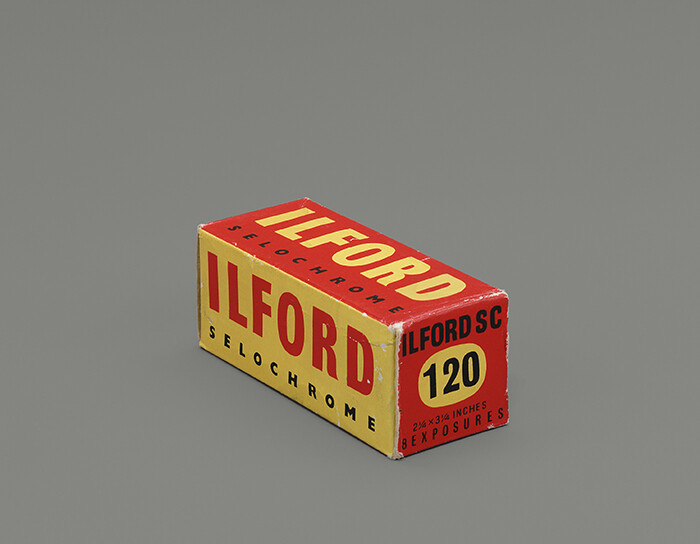
Since Susan Sontag announced the demise of cinephilia in her prescient 1996 essay “The Decay of Cinema,” discourses around the death of cinema have been widespread, fuelled in part by the replacement of celluloid by digital technology. Since our understanding of the world has been so influenced by movies—one irrevocably conditioning the other—cinema’s apparent passing has caused pain, and trauma.
By 2012 the digital takeover of film exhibition was complete. It had been threatened for almost a decade, but it was nevertheless shocking to see 35mm projectors evicted from projection booths across Western Europe and North America. Only a year earlier, British artist Tacita Dean had declared that UNESCO should recognize film as part of a universal cultural heritage, paying homage to it with her installation FILM (2011) at Tate Modern, London. The Austrian filmmaker Peter Kubelka labeled 2012 as film history’s darkest year, and produced Monument Film—a work which is impossible to stage digitally—“as a call for patient defiance.”
Whether working with film, painting, or photography, Los Angeles-based artist Morgan Fisher produces works that closely examine their medium. Best known for his 16mm films, which bring together industrial film practices and visual arts strategies, Fisher is a conceptual filmmaker who turns …
